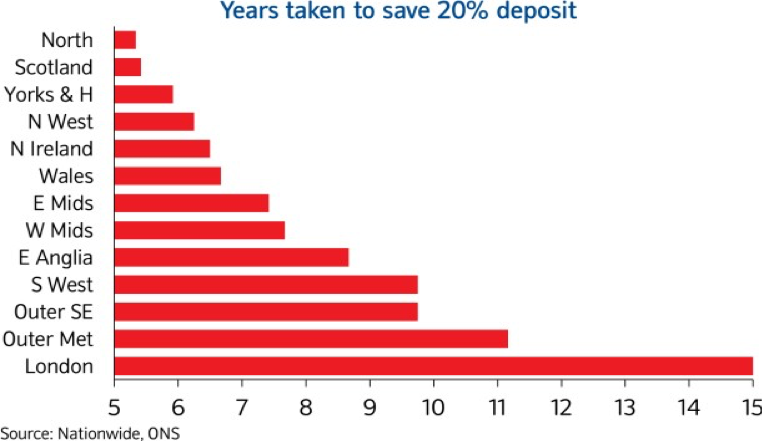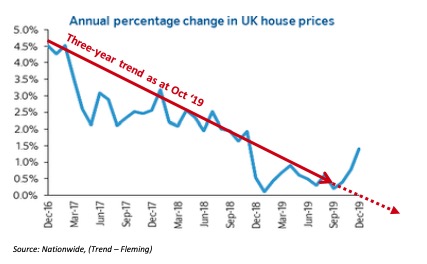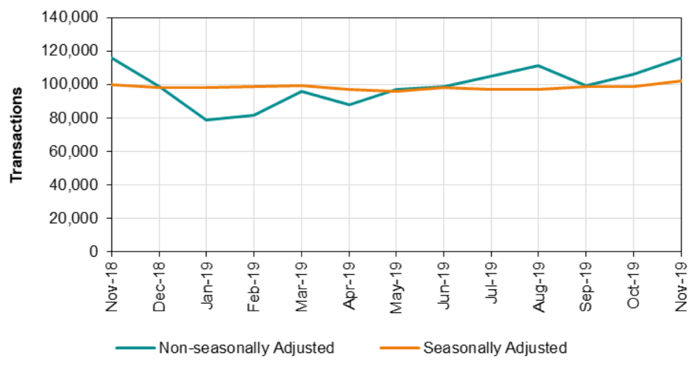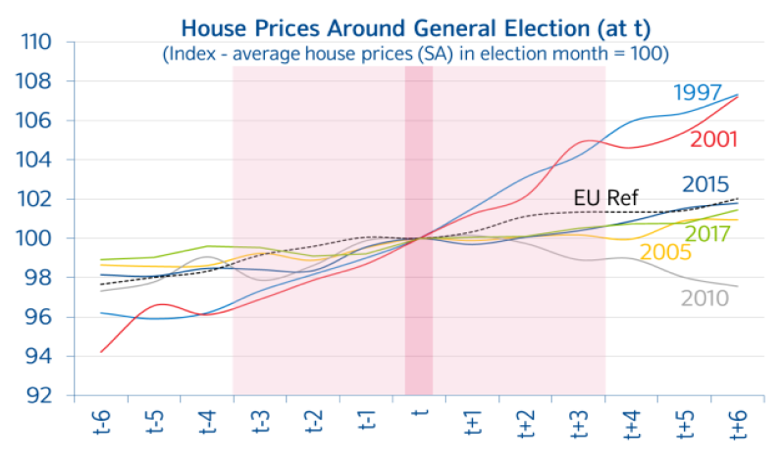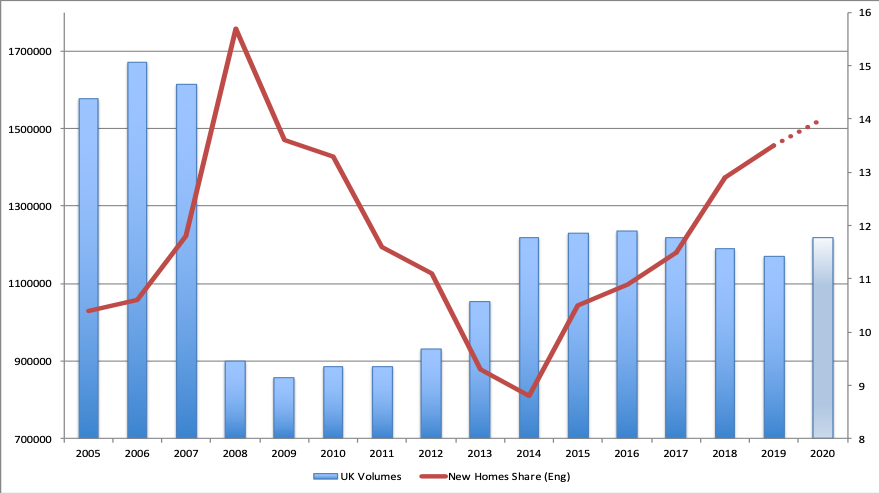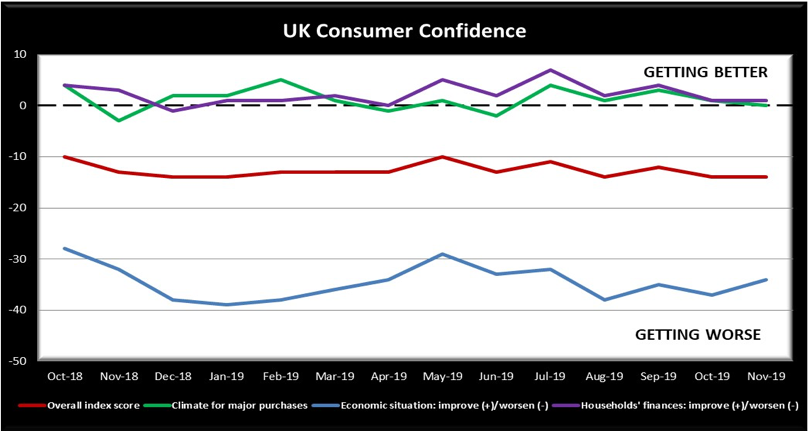A tale of two markets – what’s in store for UK property in 2020?
Matt Fleming, Residential Property Consultant at Aylesworth Fleming Limited
It was the best of times. It was the worst of times. Property prices rose. Property prices fell. The agents had a ball. The agents took a fall.
If you drew a circle around the Capital, with a radius of about 100 miles, give or take a nudge here or there, you could accurately describe the UK residential market in terms as harshly contrasting as Charles Dickens did when he explored the stark differences between London and Paris in the late 18th Century – only this time, it’s London that’s suffering.
Inside the circle, prices moved backwards in 2019, in some cases, up to 20%. On average however, if you consider the broad range of data available for localised markets (never completely accurate), the fall was only around 2%, with properties valued at over £1m taking the biggest hit. This not only dragged the UK ‘average’ index down, but the mood of the country’s journalists and pundits too, most of whom live inside the circle. Consequently, the picture they painted in the first half of the year, tended to be nothing but doom and gloom. But it didn’t reflect an accurate picture of the UK market as a whole. Just ask someone living in the more desirable parts of the North West, where some prices have risen over 10% over the last 12 months.
London and the South East may have suffered over the last couple of years, but, in the main, it will have been the ‘late-in’ speculators that took the biggest hit. Values in the Capital are still around 50% higher than they were at their peak in 2007, way beyond what most other parts of the country could aspire to. Prices surged in between 2012 and 2015, prior to the referendum, and there was little to suggest that trend would shift dramatically in the short term.
Then, David Cameron got involved and, on 23 June 2016, the Great British Public decided it was to time to leave the EU. Confidence faltered, especially among speculators, and even the depressed value of Sterling couldn’t sustain the meteoric rise in the market. In late 2016, some asking prices in London Zones 1 and 2 (not to be confused with selling prices) fell by over 30%!
As far as I’m concerned, the London market is still over-priced and has some more correction to cope with, especially when you consider that there is almost certainly another tax hike for overseas buyers around the corner. But it won’t be a collapse, more a gentle adjustment with those that genuinely need to sell – and buy – agreeing more realistic values. Particularly if the region wants to see the return of the genuine First Time Buyer.
Take a look at this excellent chart below, it was produced by Nationwide for their December Price Index bulletin. It shows the average time it would take someone earning the typical wage in each region to save a 20% deposit to buy a typical first-time buyer property, assuming they set aside 15% of their take home pay each month.
Without help from friends or family, the First Time Buyer in London and the South East would have to win the lottery to have a decent chance to get on the housing ladder, unless they’re lucky enough to secure some of the low-cost and affordable units being built alongside speculative development. It’s much more a market for investors, and I predict they will remain cautious until matters in Europe are resolved.
The UK Market in 2020
In my 2019, mid-term review, I predicted a UK average price fall for the year of between 1.5% and 2.5%, and the market has confounded those expectations, average selling prices ending the year up 1.4% according to the Nationwide. The market rallied in November and December and bucked the trend established over the last three years (see the chart below); and this recovery started before the election was called.
I take the November and December numbers to represent a bit of a ‘bounce’ and I cannot see them being sustained for any significant period. I do think the trend has shifted, but more towards a flatter, ‘wait and see’ pattern.
With over 200 clients in 46 countries and counting, Oliver has successfully navigated a 12 months in which the ‘house’ in ‘in-housing’ literally became people’s own homes instead of clients’ offices. Though a move to WFH had the potential to sound the death knell for Oliver’s in-house agency model, it took it as an opportunity to accelerate for clients even further.
With remote working, speed and efficiency baked into its DNA, the company has grown its reputation as a customer engagement and creative leader.
At a time when shoots were suspended, Oliver rose to the challenge with ‘chasing the sun’ global production capabilities, home-shooting production studios, offshore content ‘factories’ and the ability to scale-up and scale-down operations at a moment’s notice.
The business maximised and upgraded its proprietary operating system, Oliver Marketing Gateway (OMG), to meet the demands and challenges brought-on by the global pandemic. OMG gives clients immediate and secure access to their global assets, campaigns, experts and offshore capabilities, no matter where they were in the world. Using this system, clients and teams were able to reuse and re-purpose assets and campaigns during lockdown and call on help from countries where people were still able to film or get to the office.
The results speak for themselves: in 2020, Oliver delivered over 80,000 individual campaigns and over 600,000 pieces of content via OMG.
It also created Lynx’s best performing campaign of the decade, got 9 million people across 25 countries to improve their physical and mental wellbeing with Rexona and protected Barclaycard’s customers against fraud, driving a 600% increase in site traffic. As if that’s not enough, it also condemned online bullying and racism with PG Tips.
As a result, Oliver grew 35% year-on-year and saw global revenue figures of $250m. The success was seen in the business’s pipeline too: 15 new clients and three expanded territories, in France, Ireland and Nigeria.
At a corporate level, the business has also this year pledged to become an “actively anti-racist organisation”. This has included giving every individual in the business anti-racism training, appointing a diversity and inclusion lead as well as a chief inclusion officer, enlisting the activism of key stakeholders and business leaders, and recruiting a team of 40+ global changemakers to help the business stay the course. It is also a sponsor of the brilliant Brixton Finishing School.
Crucially, it has protected the wellbeing of its staff this year with a programme to safeguard people’s mental and physical wellbeing in the pandemic, leading to some of the business’s highest employee satisfaction scores on record.
Volumes continue to drift downwards
It’ll be a couple of weeks before HMRC confirm the number of transactions in the UK for 2019, but, working on their November figures, it looks likely to be very close to the 1.17 million that I predicted in my June Review.
Source: HMRC
The table shows 2019 was another flat year for UK transaction volumes, likely to end at around 1.17m
I take no great credit for this, the transaction numbers have been extraordinarily stable for the last six years, and the slight fall from the 2018 numbers was not difficult to predict given the level of uncertainty and the number of people waiting to see how things turned out. I don’t believe next year will be very different either. I do believe there will be an element of ‘Boris Bounce’, a belief that we’re ‘getting Brexit done’, but it will be short lived.
In addition to the ‘Boris’ factor, it’s accurate to say that most elections have an effect on the market, mainly in terms of volume of transactions. At the time of the 2015 poll, I spent weeks working on data collected over the elections of the last 30 years to try and demonstrate this point, only to be completely overshadowed by the excellent chart Nationwide produced for their November Price Index press release (shown below).
As a result, Oliver grew 35% year-on-year and saw global revenue figures of $250m. The success was seen in the business’s pipeline too: 15 new clients and three expanded territories, in France, Ireland and Nigeria.
At a corporate level, the business has also this year pledged to become an “actively anti-racist organisation”. This has included giving every individual in the business anti-racism training, appointing a diversity and inclusion lead as well as a chief inclusion officer, enlisting the activism of key stakeholders and business leaders, and recruiting a team of 40+ global changemakers to help the business stay the course. It is also a sponsor of the brilliant Brixton Finishing School.
Crucially, it has protected the wellbeing of its staff this year with a programme to safeguard people’s mental and physical wellbeing in the pandemic, leading to some of the business’s highest employee satisfaction scores on record.
Source: Nationwide
Although this chart focusses on values rather than volumes, it’s a great piece of work, indexing house prices at 100 at the point of the election and showing the genuine comparative position before and after. With the exception of 2010, and I think we all know why that was the case, the positive effects of an election are plain to see. And I think that the decisive outcome – regardless of the colour of the result – will have a positive effect; but it won’t be excessive, there’s still a lot of work for the politicians to do before we see how our future will pan out in the UK.
I also think that the private new homes share of the market will continue to climb.
The much-derided Help to Buy scheme is entering its final phase, in its present form in any case. At the moment, the plan is to end the scheme in 2023 and, from 2021, it will only be available to first time buyers with a price cap based on 1.5 times the regional average price. 2020 will be the last year that the majority of home buyers can take advantage of the full scheme in all its glory. I think there will be rush towards the end of the year and that will see new homes increase their share even further above the long-run average of around 10%.
The chart below plots the total number of residential transactions in the UK with a value of £40K or more against the private new homes share of the market in England. Help to Buy was launched in April 2013, the numbers are fairly conclusive in terms of the appeal of the scheme among homebuyers. I am predicting the new homes share will rise to around 14% of the total during its last year in full force.
Source: HMRC and Various
I am confident the Boris Bounce I referred to above, will help volumes in the crucial first quarter of the new year. Whether it will be a sustained improvement is yet to be seen. I’m quite sure the progress in the early stages of negotiations with the EU will be widely reported and, if they are faltering, and a no-deal Brexit rears its ugly head, confidence will be returned back to the levels of the last three years. There is little doubt that volumes will be affected as a result.
I forecast the volume of UK Residential transactions will be 1.22 million for 2020 and the private new homes share of that market will be around 14% giving a total volume of around 170k private new home completions.
Volumes are one thing, but values are the main concern of buyers, sellers, investors, bankers and governments alike – not to mention journalists!
2019 surprised a lot of market commentators, me included, by not falling into negative growth for the year. The final Nationwide index of 1.4% annual inflation, suggests that, despite all the uncertainty and pessimistic commentary, the underlying factors were strong enough to maintain both transaction levels and average prices.
The areas that saw gains in the UK only showed increases in very modest numbers, between 2.8% (Scotland) and just over zero. But they were balanced by the smaller than expected falls in the Outer South East and London of course. Surprisingly, the Outer Metropolitan Counties enjoyed a late surge and just crept into positive territory for the year.
The cost and availability of borrowing is massively important to the market. “Lend them the money and they will buy!” Interest rates stayed historically low at 0.75% and, considering the government’s determination that Brexit will have the least possible negative impact on the economy, they are likely to stay that way. The smart money suggests we’ll probably see rate reductions rather than increases over the next 12 months. Mortgage products remain abundant in a competitive market brought about by the stagnation in volume over the last six or seven years. These factors will undoubtedly have a significant effect on the market. But, so will consumer confidence.
Those who have followed my housing market commentaries down the years, will recall I put a lot of faith into the excellent survey produced monthly by GfK/NOP. I have considered this metric in my thinking for as long as I can remember, and it continues to be an extraordinarily accurate bellwether of the market.
I have marvelled in recent years how, despite the massive and sustained lack of confidence the public has in the economy, they maintain an almost stoic belief that their own personal finances are going to be OK; not brilliant, maybe not even good, but OK. This has been reflected in the static nature of the residential market in the UK. An extraordinary run of six years from 2014, where volumes have barely moved a percentage point or two in either direction – following the GfK/NOP survey like ducklings following their mother. Take a look at the November survey below;
Source: GfK/NOP
Although the blue line, ‘How will the economy fare in the next 12 months?’, is stuck at the foot of chart, the mauve line, ‘How will your own finances do?’ and the green line, ‘Is this a good time to make a major purchase?’, stay stubbornly on the “I’m not sure, but I might be OK” line – and it’s been like that since the referendum, pretty much.
It wouldn’t take a lot to nudge it – in either direction. And you can be pretty certain that the housing market will follow, all other factors being equal. I reckon we’ve got another year with no-one really knowing either way how things are going to work out with Europe. The likelihood is, if a deal is done, it’ll be done at the last moment. And up until then, we’ll be in a very similar situation to the one we’ve lived through over the last couple of years.
I struggle to see any seismic shift in market sentiment on that basis.
I’ve already explained why I see a marginal increase in transaction volumes, and I am convinced any movement in prices will be equally small – allowing for regional variations, as ever. London will be fairly steady, I’m sure of that; probably a point or two of negative growth. I think the regions that did well in 2019 will hold onto those gains but won’t add much more.
I believe that the first six months of the year will show an increase in average prices in the UK of between 1% and 2%, according to the Nationwide index. The figure for the whole of 2020 – which I will review at the half-year, will show an increase of between 1.5% and 3%, largely dependent on how the Brexit negotiations are going.
Not as earth-shattering as some of my predictions down the years, but I’m confident that, barring the invasion of a foreign power, there will be no major shifts in value in either direction. It’ll be another year of ‘steady as she goes’ averages, and some dramatic regional swings.
Matt Fleming is Residential Property Consultant to leading property marketing agency Aylesworth Fleming, part of the Inside Ideas Group, a member agency of the global You & Mr Jones network. He has specialised in residential property for over 35 years and, during that time, has worked with most of the UK’s top 20 developers.


